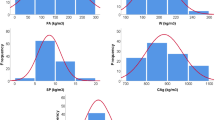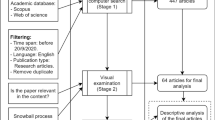Abstract
Purpose
The conventional decision-making for bridges is mostly focusing on technical, economical, and safety perspectives. Nowadays, the society devotes an ever-increased effort to the construction sector regarding their environmental performance. However, considering the complexity of the environmental problems and the diverse character of bridges, the related research for bridge as a whole system is very rare. Most existing studies were only conducted for a single indicator, part of the structure components, or a specific life stage.
Methods
Life Cycle Assessment (LCA) is an internationally standardized method for quantifying the environmental impact of a product, asset, or service throughout its whole life cycle. However, in the construction sector, LCA is usually applied in the procurement of buildings, but not bridges as yet. This paper presents a comprehensive LCA framework for road bridges, complied with LCA ReCiPe (H) methodology. The framework enables identification of the key structural components and life cycle stages of bridges, followed by aggregation of the environmental impacts into monetary values. The utility of the framework is illustrated by a practical case study comparing five designs for the Karlsnäs Bridge in Sweden, which is currently under construction.
Results and discussion
This paper comprehensively analyzed 20 types of environmental indicators among five proposed bridge designs, which remedies the absence of full spectrum of environmental indicators in the current state of the art. The results show that the monetary weighting system and uncertainties in key variables such as the steel recycling rate and cement content may highly affect the LCA outcome. The materials, structural elements, and overall designs also have varying influences in different impact categories. The result can be largely affected by the system boundaries, surrounding environment, input uncertainties, considered impact indicators, and the weighting systems applied; thus, no general conclusions can be drawn without specifying such issues.
Conclusions
Robustly evaluating and ranking the environmental impact of various bridge designs is far from straightforward. This paper is an important attempt to evaluate various designs from full dimensions. The results show that the indicators and weighting systems must be clearly specified to be applicable in a transparent procurement. This paper provides vital knowledge guiding the decision maker to select the most LCA-feasible proposal and mitigate the environmental burden in the early stage.










Similar content being viewed by others
References
Ahlroth S, Finnveden G (2011) Ecovalue08—a new valuation set for environmental systems analysis tools. J Clean Prod 19(17):1994–2003
Ahlroth S, Nilsson M, Finnveden G, Hjelm O, Hochschorner E (2011) Weighting and valuation in selected environmental systems analysis tools—suggestions for further developments. J Clean Prod 19(2):145–156
Baker JW, Lepech MD (2009) Treatment of uncertainties in life cycle assessment. In: Proceedings of the 10th international congress on structural safety and reliability, Osaka, Japan, 13–17 September 2009
Baumann H, Tillman AM (2004) The Hitch Hiker’s Guide to LCA: an orientation in life cycle assessment methodology and application. Studentlitteratur AB, Sweden
Björklund AE (2002) Survey of approaches to improve reliability in LCA. Int J Life Cycle Assess 7(2):64–72
Bouhaya L, Le Roy R, Feraille-Fresnet A (2009) Simplified environmental study on innovative bridge structure. Environ Sci Technol 43(6):2066–2071
Carlsson Reich M (2005) Economic assessment of municipal waste management systems—case studies using a combination of life cycle assessment (LCA) and life cycle costing (LCC). J Clean Prod 13(3):253–263
Choo JF, Ha DH, Goo NS, Jang WS (2013) Preliminary tests for a multi-functional bridge bearing with built-in piezoelectric material. Adv Sci Lett 19(1):37–41
Classen M, Althaus HJ, Blaser S, Scharnhorst W, Tuchschmid M, Jungbluth N, Emmenegger MF (2009) Life cycle inventories of metals. Final report ecoinvent data v2, 1
Collings D (2006) An environmental comparison of bridge forms. Proc ICE-Bridge Eng 159(4):163–168
Contreras AM, Rosa E, Pérez M, Van Langenhove H, Dewulf J (2009) Comparative life cycle assessment of four alternatives for using by-products of cane sugar production. J Clean Prod 17(8):772–779
de Schrynmakers P (2009) Life cycle thinking in the aluminium industry. Int J Life Cycle Assess 14(suppl 1):S2–S5
Du G (2012) Towards sustainable construction: life cycle assessment of railway bridges. Licentiate thesis in Division of Structural Engineering and Bridges, Department of Civil and Architectural Engineering, KTH Royal Institute of Technology, Stockholm, Sweden
Du G, Karoumi R (2013) Life cycle assessment of a railway bridge: comparison of two superstructure designs. Struct Infrastruct Eng 9(11):1149–1160
Du G, Karoumi R (2014) Life cycle assessment framework for railway bridges: literature survey and critical issues. Struct Infrastruct Eng 10(3):277–294
Ekerot S (2003) Stålets kretslopp. Rapport från Jernkontorets Forskning, nr D 792, ISSN 0280-249X (in Swedish)
Ekvall T, Tillman AM (1997) Open-loop recycling: criteria for allocation procedures. Int J Life Cycle Assess 2(3):155–162
European Environment Agency (EEA) (2012) National greenhouse gas inventories (IPCC Common Reporting Format sector classification), 2012, http://www.eea.europa.eu/data-and-maps/data/national-emissions-reported-to-the-unfccc-and-to-the-eu-greenhouse-gas-monitoring-mechanism-6
Finnveden G, Ekvall T (1998) Life-cycle assessment as a decision-support tool—the case of recycling versus incineration of paper. Resour Conserv Recycl 24(3):235–256
Finnveden G, Eldh P, Johansson J (2006) Weighting in LCA based on ecotaxes—development of a mid-point method and experiences from case studies. Int J Life Cycle Assess 11:81–88
Finnveden G, Håkansson C, Noring M (2013) A new set of valuation factors for LCA and LCC based on damage costs-Ecovalue 2012, The 6th international conference on life cycle management in Gothenburg, Sweden
Gervásio H, Simões da Silva L (2008) Comparative lifecycle analysis of steel-concrete composite bridges. Struct Infrastruct Eng 4(4):251–269
Goedkoop MJ, Heijungs R, Huijbregts M, De Schryver A, Struijs J, Van Zelm R (2009) ReCiPe 2008. A life cycle impact assessment method which comprises harmonised category indicators at the midpoint and the endpoint level; First edition Report I: Characterisation
Gustafsson B (1998) Scope and limits of the market mechanism in environmental management. Ecol Econ 24(2):259–274
Habert G, Arribe D, Dehove T, Espinasse L, Le Roy R (2012) Reducing environmental impact by increasing the strength of concrete: quantification of the improvement to concrete bridges. J Clean Prod 35:250–262
Hammad A, Itoh Y, Nishido T (1993) Bridge planning using GIS and expert system approach. J Comput Civil Eng 7(3):278–295
Hammervold J, Reenaas M, Brattebø H (2011) Environmental life cycle assessment of bridges. J Bridge Eng 18(2):153–161
International Reference Life Cycle Data System (ILCD) Handbook (2010) General Guide for Life Cycle Assessment—detailed guidance, First edition. EUR 24708, JRC, European Commission
Höglund T (1992) Local buckling of steel bridge girder webs during launching. In: Krupka, Vlastimil, Drdacky, Milos (eds) Contact loading and local effects in thin-walled plated and shell structures. Springer Berlin Heidelberg, p 135–139
Horvath A, Hendrickson C (1998) Steel versus steel-reinforced concrete bridges: environmental assessment. J Infrastruct Syst 4(3):111–117
Hunkeler D, Lichtenvort K, Rebitzer G, Ciroth A, (2008) Environmental Life Cycle Costing, CRC Press
ISO 14040 (2006) Environmental management—life cycle assessment—principles and framework. International Organization of Standardization, Geneva
Itoh Y, Kitagawa T (2003) Using CO2 emission quantities in bridge lifecycle analysis. Eng Struct 25(5):565–577
Kicherer A, Schaltegger S, Tschochohei H, Ferreira Pozo B (2007) Eco-efficiency. Int J Life Cycle Assess 12(7):537–543
Kiwjaroun C, Tubtimdee C, Piumsomboon P (2009) LCA studies comparing biodiesel synthesized by conventional and supercritical methanol methods. J Clean Prod 17:143–153
Kundak M, Lazić L, Črnko J (2009) CO2 emissions in the steel industry. Metalugija 48(3):193–197
Laurent A, Olsen SI, Hauschild MZ (2012) Limitations of carbon footprint as indicator of environmental sustainability. Environ Sci Technol 46(7):4100–4108
Lemay L (2011) P.E., S.E., LEED AP, Sr. VP, Sustainable Development, NRMCA, 2011, Life Cycle Assessment of Concrete Buildings, Concrete sustainability report, National ready mixed concrete association CSR04
Lim SR, Park D, Park JM (2008) Environmental and economic feasibility study of a total wastewater treatment network system. J Environ Manag 88(3):564–575
Lippiatt BC (2007) BEES 4.0. Building for Environmental and Economic Sustainability Technical Manual and User Guide. National Institute of Standards and Technology (NIST).http://www.bfrl.nist.gov/oae/software/bees/
Liu CH, Lin SJ, Lewis C (2010) Life Cycle Assessment of DRAM in Taiwan’s semiconductor industry. J Clean Prod 18:419–425
Mahgoub MAS, van der Stehen M, Abu-Zeid NP, Vairavamoorthy K, Abu-Zeid K, Vairavamoorthy K (2010) Towards sustainability in urban waters, a life cycle analysis of the urban water system in Alexandria City. Egypt J Clean Prod 18(11):1100e1106
Martin AJ (2004) Concrete bridges in sustainable development. Proc Inst Civ Eng-Eng Sustain 157(4):219–230
Nakamura S, Kondo Y (2006) Hybrid LCC of appliances with different energy efficiency. Int J Life Cycle Assess 11(5):305–314
Nakamura SI, Momiyama Y, Hosaka T, Homma K (2002) New technologies of steel/concrete composite bridges. J Constr Steel Res 58(1):99–130
Nicholson AL, Olivetti EA, Gregory J, Field FR, Kirchain Jr RE (2009) End-of-life LCA allocation methods: open loop recycling impacts on robustness of material selection decisions. IEEE International Symposium, p 1–6
Peters JB (1991) Practical timber formwork. Taylor & Francis
Safi M (2013) Life-Cycle Costing: Applications and Implementations in Bridge Investement and Management.” Doctoral Thesis, Division of Structural Engineering and Bridges, KTH Royal Institute of Technology, Stockholm, Bulletin 121
Safi M, Sundquist H, Karoumi R (2014a) Cost-efficient procurement of bridge infrastructures by incorporating life-cycle cost analysis with bridge management systems. J Bridge Eng. doi:10.1061/(ASCE)BE.1943-5592.0000673, 04014083
Safi M, Du G, Sundquist H, Karoumi R (2014b) Holistic approach to sustainable bridge procurement considering LCC, LCA, Lifespan, User-cost and aesthetics. Submitted to ASCE- J. Bridge Eng
Sjunnesson J (2005) Life Cycle Assessment of concrete. Department of Technology and Society. Environmental and Energy Systems Studies, Lund
Sleeswijk AW, van Oers LF, Guinée JB, Struijs J, Huijbregts MA (2008) Normalisation in product life cycle assessment: an LCA of the global and European economic systems in the year 2000. Sci Total Environ 390(1):227–240
Stripple H (2001) Life cycle assessment of road. Swedish Environmental Research Institute IVL
Suh YJ, Rousseaux P (2002) An LCA of alternative wastewater sludge treatment scenarios. Resour Conserv Recycl 35(3):191–200
Thiebault V, Du G, Karoumi R (2013) Design of railway bridges considering life-cycle assessment. Proceedings of the Institution of Civil Engineers (ICE)-Bridge Engineering. doi: 10.1680/bren.10.00054
Treloar GJ, Love PED, Faniran OO, Iyer-Raniga U (2000) A hybrid life cycle assessment method for construction. Constr Manag Econ 18(1):5–9
Tsoutsos T, Kouloumpis V, Zafiris T, Foteinis S (2010) Life cycle assessment for biodiesel production under Greek climate conditions. J Clean Prod 18(4):328–335
UNEP Industry and Environment Report (2003). Sustainable building and construction: facts and figures. http://www.uneptie.org/media/review/vol26no2-3/005-098.pdf
Van Oers L, Huppes G (2001) LCA normalisation factors for the Netherlands, Western Europe and the World. Int J Life Cycle Assess 6(5):256
Widman J (1998) Environmental impact assessment of steel bridges. J Constr Steel Res 46(1):291–293
World Steel Asscociation (2008) Steel and energy fact sheet. http://www.worldsteel.org/dms/internetDocumentList/fact-sheets/Fact-sheet_Energy/document/Fact%20sheet_Energy.pdf. Accessed on 7 Nov 2012
Zackrisson M (2005) Environmental aspects when manufacturing products mainly out of metals and/or polymers. J Clean Prod 13(1):43–49
Zhang X, Shen L, Zhang L (2013) Life cycle assessment of the air emissions during building construction process: a case study in Hong Kong. J Renew Sustain Energy 17:160–169
Author information
Authors and Affiliations
Corresponding author
Additional information
Responsible editor: Guillaume Habert
Rights and permissions
About this article
Cite this article
Du, G., Safi, M., Pettersson, L. et al. Life cycle assessment as a decision support tool for bridge procurement: environmental impact comparison among five bridge designs. Int J Life Cycle Assess 19, 1948–1964 (2014). https://doi.org/10.1007/s11367-014-0797-z
Received:
Accepted:
Published:
Issue Date:
DOI: https://doi.org/10.1007/s11367-014-0797-z




